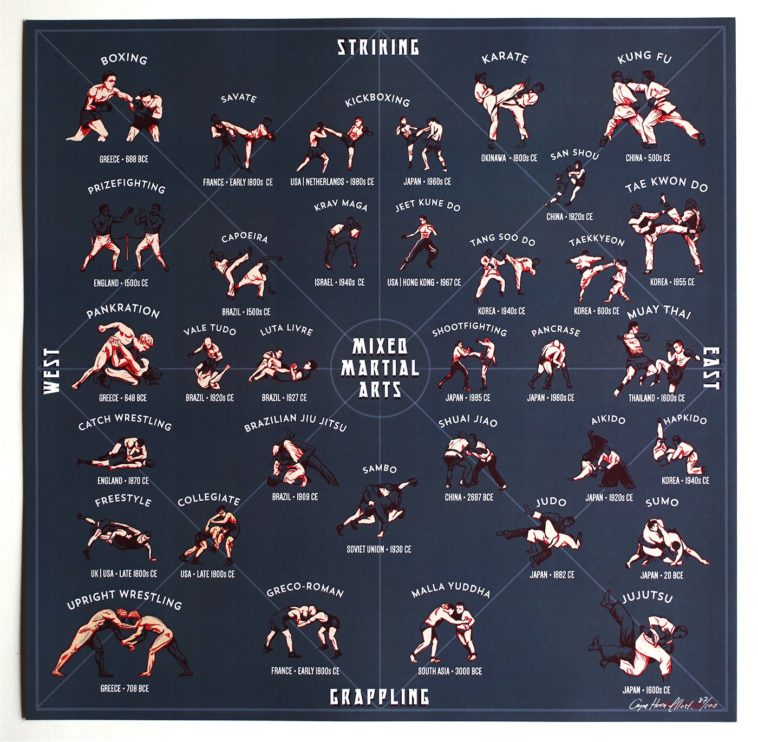Unwinding The Mystery Of Numerous Fighting Style Techniques: A Guide To Martial Arts, Taekwondo, And More
Unwinding The Mystery Of Numerous Fighting Style Techniques: A Guide To Martial Arts, Taekwondo, And More
Blog Article
Web Content Writer-Haugaard Weiner
Are you tired of sensation bewildered by the vast globe of martial arts? With a lot of designs to select from, it can be very easy to get lost in a sea of punches, kicks, and mystical names. But anxiety not!
This discussion will debunk the various martial arts designs, taking you on a journey from the effective strikes of Karate to the dynamic kicks of Taekwondo. Prepare yourself to uncover the beginnings, methods, and ideologies behind these old art kinds.
So, tighten your belt and prepare to start an enlightening exploration right into the fascinating world of martial arts.
Origins of Martial Arts Styles
The beginnings of martial arts styles can be traced back to old worlds and their demand for self-defense and battle strategies. Throughout history, various societies established their own special techniques of combating, each with its very own set of strategies and viewpoints.
In China, for example, martial arts styles such as Martial art and Tai Chi were developed as a means of self-defense and improving physical and psychological wellness.
In Japan, the samurai warriors created styles like Martial arts and Judo, concentrating on self-control, precision, and mastery of the body.
In a similar way, in Korea, Taekwondo became a martial art emphasizing high kicks, quick activities, and psychological determination.
These very early worlds laid the structure for the diverse selection of fighting styles designs that exist today, each with its very own rich background and cultural importance.
Methods and Training Approaches
To understand fighting styles styles, professionals need to find out different techniques and training techniques.
Strategies are the certain motions and activities utilized in combat, such as strikes, kicks, throws, and obstructs. Different martial arts styles have their own distinct set of strategies that specialists must understand via strenuous training.
Training methods differ depending upon the style, however they usually include a mix of physical conditioning, drills, competing, and forms.
Physical fitness is essential to construct stamina, adaptability, and endurance. Drills assist practitioners fine-tune their methods and enhance their rate and precision.
Competing permits https://selfdefenseknifewoman21852.azzablog.com/32602826/practical-and-powerful-protection-approaches-with-martial-arts-training to practice their techniques in a regulated, reasonable environment. Kinds, also referred to as kata, are prearranged sequences of motions that assist professionals create muscle mass memory and focus.
Ideologies and Principles
Discovering the viewpoints and concepts of martial arts styles can give you with a deeper understanding of your chosen technique. Each martial art has its very own special approach and set of assisting concepts that form the means it's exercised.
For example, Karate highlights technique, regard, and self-control. Suggested Web site shows experts to focus their body and minds, enabling them to safeguard themselves while maintaining a feeling of inner tranquility.
On the other hand, Taekwondo places a solid emphasis on speed, dexterity, and flexibility. Its principles are rooted in the tenets of politeness, integrity, perseverance, self-control, and indomitable spirit.
Verdict
Now that you have actually explored the beginnings, techniques, and viewpoints of various martial arts styles, you have a much deeper understanding of these ancient techniques.
Visualize a young karate trainee, experimenting steadfast decision and focus, appearing boards with an effective strike.
Their trip showcases the dedication and stamina required to understand a fighting style, advising us that with discipline and determination, anything is feasible.
